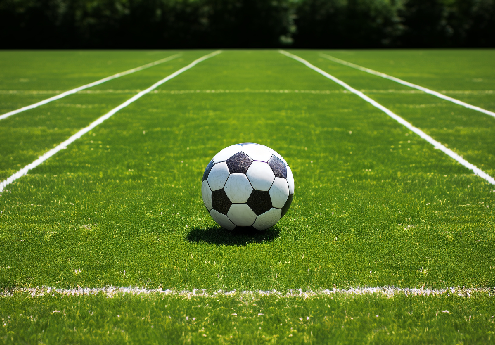
- Afrikaans
- Arabic
- Belarusian
- Bengali
- Czech
- Danish
- Dutch
- English
- Esperanto
- Estonian
- Finnish
- French
- German
- Greek
- Hindi
- Hungarian
- Icelandic
- Indonesian
- irish
- Italian
- Japanese
- kazakh
- Rwandese
- Korean
- Kyrgyz
- Lao
- Latin
- Latvian
- Malay
- Mongolian
- Myanmar
- Norwegian
- Persian
- Polish
- Portuguese
- Romanian
- Russian
- Serbian
- Spanish
- Swedish
- Tagalog
- Tajik
- Thai
- Turkish
- Turkmen
- Ukrainian
- Urdu
- Uighur
- Uzbek
- Vietnamese
Benefits of Artificial Turf for Football Fields and Player Performance
Oct . 22, 2024 11:11 Back to list
The Rise of Artificial Grass Football Fields A Game Changer for the Sport
In recent years, the world of football has seen a significant transformation, one that is not just limited to tactics, strategies, or player skills. This transformation is best exemplified by the increasing popularity of artificial grass football fields. Once considered merely a cost-effective alternative to natural grass, these synthetic surfaces have become the new standard in many regions around the globe. This article will explore the benefits, disadvantages, and future of artificial grass football fields.
The Advantages of Artificial Grass
One of the primary benefits of artificial grass is its durability. Natural grass can suffer from wear and tear due to frequent use, leading to uneven playing surfaces and increased maintenance costs. Artificial grass, on the other hand, can withstand heavy foot traffic without showing significant signs of wear. This makes it an ideal choice for schools, parks, and community centers, where fields are used for numerous match-ups throughout the week.
Moreover, artificial grass fields provide consistent playing conditions regardless of the weather. Rain can transform a natural grass field into a muddy, unplayable area, but synthetic turf allows for games to be played right after a downpour. Players appreciate the predictability of the surface, which can enhance performance and reduce the risk of injuries associated with uneven or slippery conditions.
Another noteworthy advantage is the reduced maintenance required for artificial grass. While natural grass necessitates regular mowing, watering, and fertilizing, synthetic surfaces eliminate much of this upkeep. This not only saves time and labor costs but also provides a solution in regions where water conservation is vital. Players and teams can spend more time practicing and playing rather than focusing on field maintenance.
Environmental Considerations
artificial grass football field

While the benefits of artificial grass are compelling, there are environmental concerns to consider as well. Critics argue that synthetic turf can contribute to a significant amount of plastic waste, as most artificial grass fields are made from non-biodegradable materials. Additionally, the infill used to cushion the surface often contains crumb rubber, which is derived from recycled tires. Although this material provides excellent shock absorption, its potential impact on human health and the environment remains a contentious issue.
Efforts are being made to mitigate these environmental concerns. Many manufacturers strive to create more eco-friendly options by incorporating recyclable materials and innovative production methods. Furthermore, advancements in technology have led to the development of more sustainable infill materials that do not pose the same environmental risks as traditional crumb rubber.
The Future of Artificial Grass Football Fields
The future looks bright for artificial grass football fields. As technology advances, we can expect to see even more improvements in the quality and performance of synthetic surfaces. Innovations such as hybrid turf systems, which combine natural grass and synthetic fibers, offer an exciting alternative that seeks to harness the benefits of both worlds. This approach allows for a more natural playing experience while maintaining the durability of artificial turf.
Moreover, the growing awareness of sports science and player health is leading to the demand for surfaces that minimize injury risks. Improvements in synthetic materials and designs promise to deliver safer options for athletes of all ages and skill levels. As more research emerges, the football community may embrace artificial grass as a viable and preferred alternative to traditional grass fields.
Conclusion
Artificial grass football fields represent a significant advancement in the sport, providing numerous advantages ranging from reduced maintenance to enhanced durability and availability. While there are environmental considerations that must be acknowledged, ongoing innovations in material science are paving the way for more sustainable and safer options. As football continues to evolve, artificial grass is likely to play a crucial role in shaping the future of the game, ensuring that players can perform at their best on a reliable and consistent playing surface. Embracing this change could lead to an exciting new era in football, one where the barriers of weather and maintenance are no longer hurdles for the passionate players and fans alike.
-
The Benefits of Artificial Turf for Indoors
NewsJul.15,2025
-
How Artificial Grass Suppliers Ensure Quality Products
NewsJul.15,2025
-
Artificial Grass and Pets: A Space for Relaxation
NewsJul.08,2025
-
Balcony & Outdoor Decoration with Artificial Grass
NewsJul.08,2025
-
Best Indoor Artificial Grass for Home
NewsJul.07,2025
-
Best Pet Turf for Dogs: Safe & Durable Artificial Grass Options
NewsJul.07,2025
Products categories









